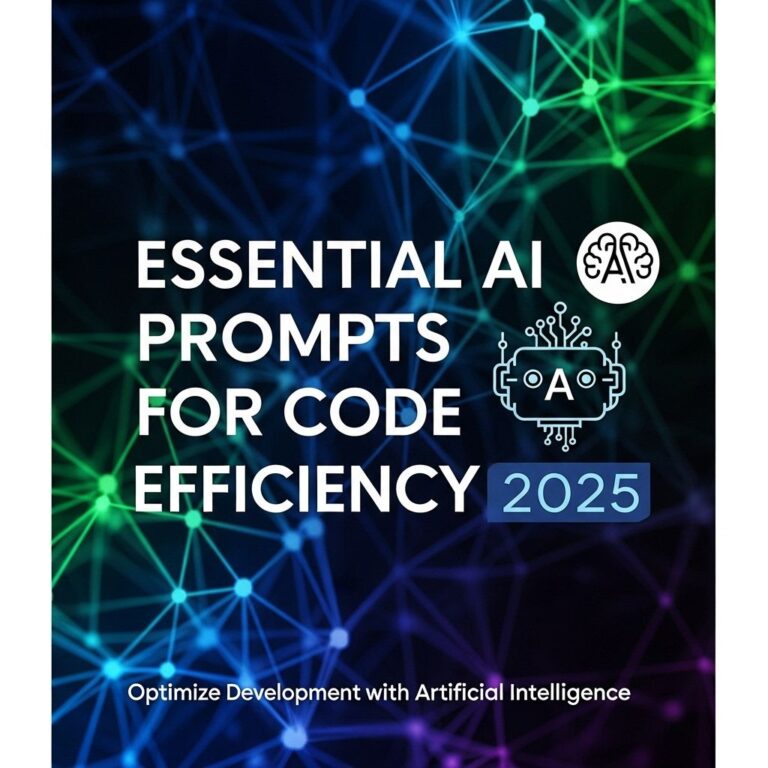In today’s digital age, chatbots have become an essential tool for businesses, enhancing customer engagement and streamlining communication. Whether you are a tech enthusiast or a business owner, building your own chatbot can seem daunting. However, with the right tools and guidance, it can be a straightforward process. This article will explore the steps to create an effective chatbot, from ideation to deployment, ensuring you can leverage this technology for your needs.
Table of Contents
Understanding Chatbots
Before diving into the development process, it is crucial to understand what a chatbot is and the different types available. A chatbot is a software application designed to simulate human conversation through voice or text interactions. The purpose of a chatbot can vary significantly based on its design and implementation.
Types of Chatbots
- Rule-Based Chatbots: These follow predefined rules and respond based on specific keywords or phrases.
- AI-Powered Chatbots: Using machine learning and natural language processing, these bots understand context and engage in more complex conversations.
- Hybrid Chatbots: Combining the two, these bots offer both rule-based responses and AI capabilities, making them versatile for various applications.
Defining the Purpose of Your Chatbot
Identifying the purpose of your chatbot is a critical first step. Consider the following questions:
- What problem does the chatbot aim to solve?
- Who is the target audience?
- What functionality do you want to include?
By answering these questions, you can outline the core functions of your bot, ensuring it meets user needs effectively.
Choosing the Right Platform
There are numerous platforms available that simplify the chatbot development process. Here are some popular ones:
| Platform | Type | Features |
|---|---|---|
| Dialogflow | AI-Powered | Natural language understanding, integration with Google Assistant |
| Microsoft Bot Framework | Hybrid | Supports various channels, extensive SDK |
| Chatfuel | Rule-Based | No coding required, Facebook Messenger integration |
| ManyChat | Rule-Based | Drag-and-drop interface, marketing automation features |
Designing Conversational Flows
Once you have chosen a platform, the next step is to design the conversational flows. This involves mapping out how users will interact with your chatbot. Here are some tips to consider:
Creating User Personas
Define the personas of users who will interact with your chatbot. This helps in tailoring the conversation to meet their expectations.
Using Flowcharts
Create flowcharts to outline possible interactions. Begin with a greeting and branch out based on user responses. Tools like Lucidchart or draw.io can be helpful for this.
Writing Conversational Scripts
Craft scripts for each interaction. Ensure that the language is friendly and aligns with your brand’s voice. A well-written script can improve user engagement significantly.
Integrating with APIs
To enhance functionality, you may want your chatbot to integrate with other services or APIs. For instance, if your chatbot handles customer inquiries, connecting it to a CRM system can help retrieve user data. Here’s how to approach integration:
- Identify APIs: Determine which services your chatbot needs to connect with.
- Authentication: Ensure you have the required API keys and understand authentication methods.
- Testing: Rigorously test each integration to ensure smooth functionality.
Testing Your Chatbot
Before launching your chatbot, thorough testing is essential. Here’s a checklist of what to test:
- Check for response accuracy.
- Test conversational flows for logical progression.
- Evaluate the bot’s performance under load.
- Collect feedback from beta testers.
Deploying Your Chatbot
Once testing is complete, you’re ready to deploy your chatbot. Consider the following:
Choosing Deployment Channels
Decide where your chatbot will live. Popular options include:
- Website live chat
- Social media platforms (Facebook Messenger, WhatsApp)
- Mobile applications
Monitoring Performance
Post-deployment, monitoring your chatbot’s performance is crucial. Use analytics to track:
- User engagement rates
- Common user queries
- Response times
Iterating Based on Feedback
Chatbots are not a “set and forget” solution. Continuous improvement based on user feedback helps in refining the bot to meet evolving needs. Consider implementing a feedback mechanism within the chatbot, allowing users to rate their interactions and suggest improvements.
Conclusion
Building your own chatbot can be a rewarding experience, opening up new avenues for user interaction and engagement. By following the steps outlined above, you can create a chatbot that not only meets your business objectives but also provides significant value to users. Embrace the technology, and watch as your chatbot transforms the way you connect with your audience.
FAQ
What are the key steps to build your own chatbot?
To build your own chatbot easily, start by defining the purpose of your bot, choose a chatbot platform like Dialogflow or Chatfuel, design the conversation flow, integrate APIs if needed, and finally, test and deploy your chatbot.
Do I need programming skills to create a chatbot?
No, many chatbot platforms offer user-friendly interfaces that allow you to create a chatbot without any coding skills. However, some advanced features may require basic programming knowledge.
What platforms can I use to create a chatbot?
You can use platforms like ManyChat, Chatfuel, Dialogflow, Microsoft Bot Framework, and Tars to create your chatbot with ease.
How can I improve my chatbot’s responses?
You can improve your chatbot’s responses by regularly updating its knowledge base, using natural language processing, and gathering user feedback to refine its conversational abilities.
Is it possible to integrate a chatbot with social media?
Yes, most chatbot platforms allow integration with social media channels like Facebook Messenger, WhatsApp, and Instagram, enabling you to reach a wider audience.
What are the benefits of using a chatbot for my business?
Using a chatbot can enhance customer service, increase efficiency, provide 24/7 support, and help you gather valuable insights from customer interactions.









